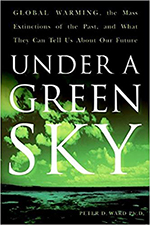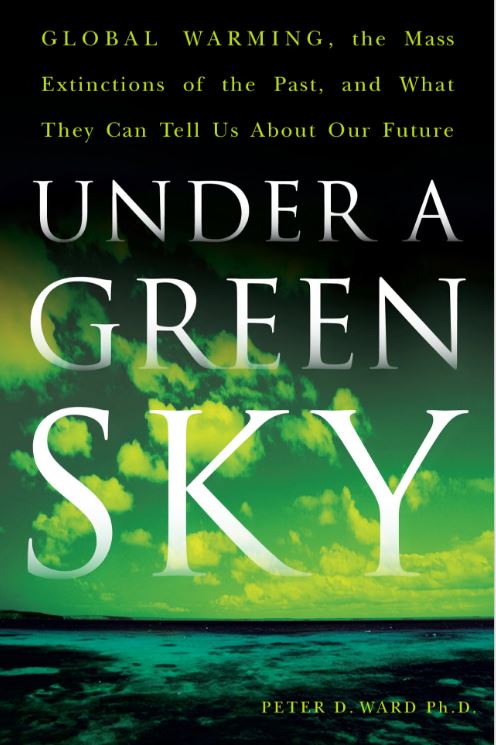 I’ve got a few books to catch up on from my summer reading. The first is Under a Green Sky (2007), by University of Washington geoscientist Peter Ward. I picked this up because it was referenced in another book I’d read recently: Peter Brannen’s The Ends of the World (2017). (I’ve got a review of that one coming out in a forthcoming issue of EARTH magazine, by the way!) Brannen described Ward’s book as highly accessible, though I’d say that Brannen’s book is the best one I’ve ever read on the subject of mass extinctions. Under a Green Sky covers the same topic from an insider’s perspective: While Brannen is a journalist, Ward is a scientist who works on mass extinctions. His writing style here is a little clunky – a little overwrought, excessively wordy, floridly descriptive. The sentences have a lot of clauses. But I’d say the charm of the obsessive narrator is congruent with this style of writing, though, and it comes off as intense and impassioned. And there’s no substitute for hearing it “straight from the horse’s mouth.” Ward recounts quirky and interesting aspects of his field work around the planet, grappling with nature and logistics to come to a better understanding of how mass extinctions take place. He covers the theoretical basis for his field expeditions, and then the implications that result from finding something critical (or failing to find it) in the field. Ultimately, the “point” of the book is to outline the biogeochemical thinking behind the current paradigm for mass extinctions. That is: large igneous provinces putting out lots of CO2 and shutting down ocean circulation, which leads to ocean anoxia, and if that gets shallow enough (into the photic zone), you get the proliferation of certain bacteria that produce hydrogen sulfide. That kills off adjacent marine animals, and can leak into the atmosphere to poison the land fauna as well. Of course, this has implications for the current non-volcanic carbon loading of the atmosphere – a prime example of how geological research about the past can serve as critical insights for the present day. Between this book and Brannen’s, I’d say Brannen’s is the better one, but that’s a sort of “on the shoulders of giants” situation, with a decade of insights between the two volumes.
I’ve got a few books to catch up on from my summer reading. The first is Under a Green Sky (2007), by University of Washington geoscientist Peter Ward. I picked this up because it was referenced in another book I’d read recently: Peter Brannen’s The Ends of the World (2017). (I’ve got a review of that one coming out in a forthcoming issue of EARTH magazine, by the way!) Brannen described Ward’s book as highly accessible, though I’d say that Brannen’s book is the best one I’ve ever read on the subject of mass extinctions. Under a Green Sky covers the same topic from an insider’s perspective: While Brannen is a journalist, Ward is a scientist who works on mass extinctions. His writing style here is a little clunky – a little overwrought, excessively wordy, floridly descriptive. The sentences have a lot of clauses. But I’d say the charm of the obsessive narrator is congruent with this style of writing, though, and it comes off as intense and impassioned. And there’s no substitute for hearing it “straight from the horse’s mouth.” Ward recounts quirky and interesting aspects of his field work around the planet, grappling with nature and logistics to come to a better understanding of how mass extinctions take place. He covers the theoretical basis for his field expeditions, and then the implications that result from finding something critical (or failing to find it) in the field. Ultimately, the “point” of the book is to outline the biogeochemical thinking behind the current paradigm for mass extinctions. That is: large igneous provinces putting out lots of CO2 and shutting down ocean circulation, which leads to ocean anoxia, and if that gets shallow enough (into the photic zone), you get the proliferation of certain bacteria that produce hydrogen sulfide. That kills off adjacent marine animals, and can leak into the atmosphere to poison the land fauna as well. Of course, this has implications for the current non-volcanic carbon loading of the atmosphere – a prime example of how geological research about the past can serve as critical insights for the present day. Between this book and Brannen’s, I’d say Brannen’s is the better one, but that’s a sort of “on the shoulders of giants” situation, with a decade of insights between the two volumes.

